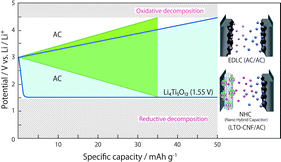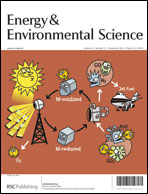Second generation ‘nanohybrid supercapacitor’: Evolution of capacitive energy storage devices
Abstract
Nanoscience and nanotechnology can provide tremendous benefits to electrochemical energy storage devices, such as batteries and supercapacitors, by combining new nanoscale properties to realize enhanced energy and power capabilities. A number of published reports on hybrid systems are systematically reviewed in this perspective. Several potential strategies to enhance the energy density above that of generation-I electric double layer capacitors (EDLC: activated carbon/activated carbon) are discussed and some fundamental issues and future directions are identified. We suggest a new hybrid supercapacitor system that is able to meet the energy and power demands for a variety of applications, ranging from microelectronic devices to electrical vehicles, which presents itself as a breakthrough improvement. Two practical hybrid supercapacitor systems, namely, a lithium-ion capacitor (LIC: graphite/activated carbon) and a nanohybrid capacitor (NHC: (nc-Li4Ti5O12/CNF composite)/activated carbon), are featured and compared. The proposed NHC can pave the way toward generation-II supercapacitor systems by taking advantage of a novel, high quality, high efficiency and inexpensive nanomaterial preparation procedure. With such a breakthrough in nanofabrication–nanohybridization technology, the NHC, which utilizes an ultrafast nano-crystalline Li4Ti5O12, is considered to be an alternative for conventional generation-I EDLCs.


 Please wait while we load your content...
Please wait while we load your content...